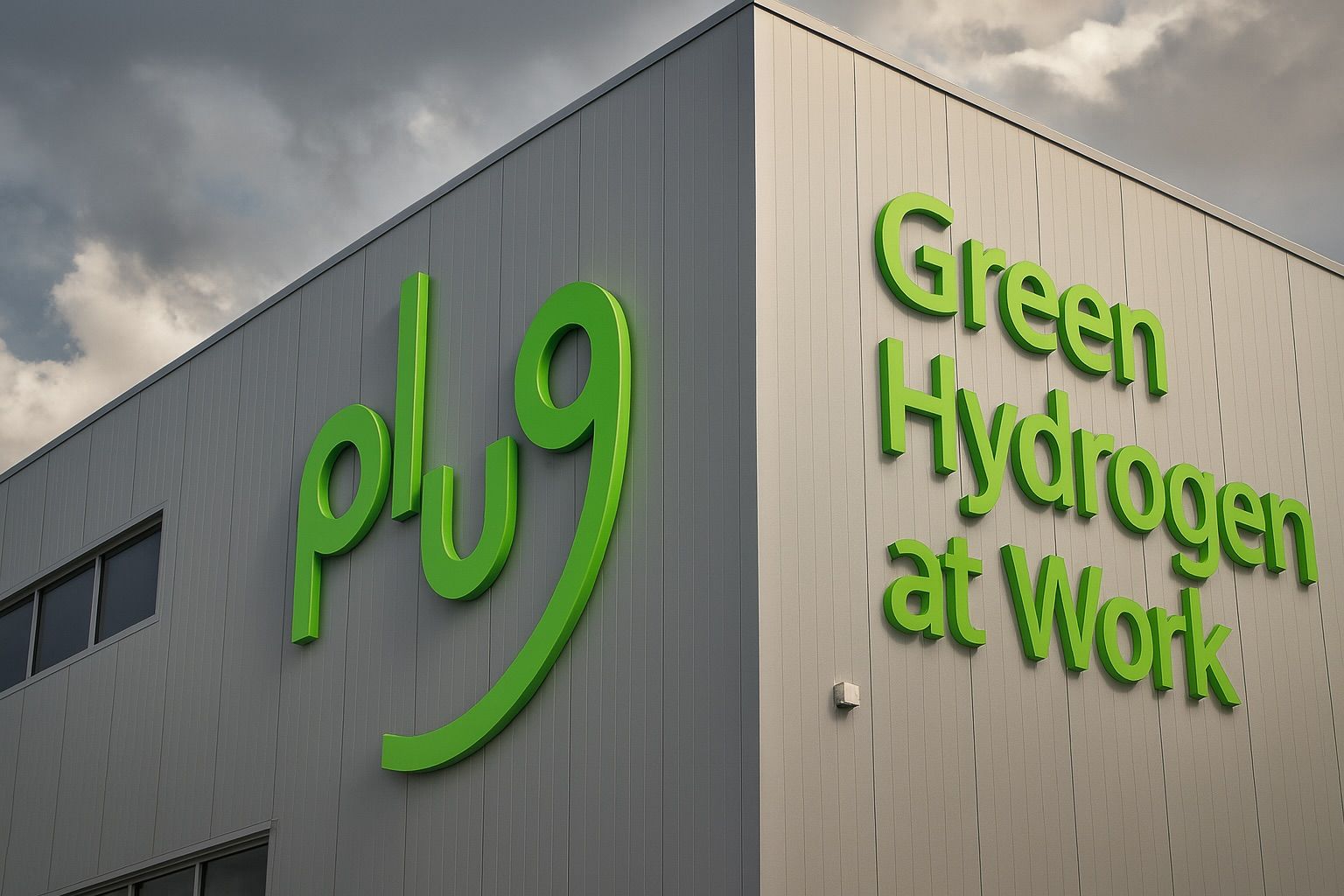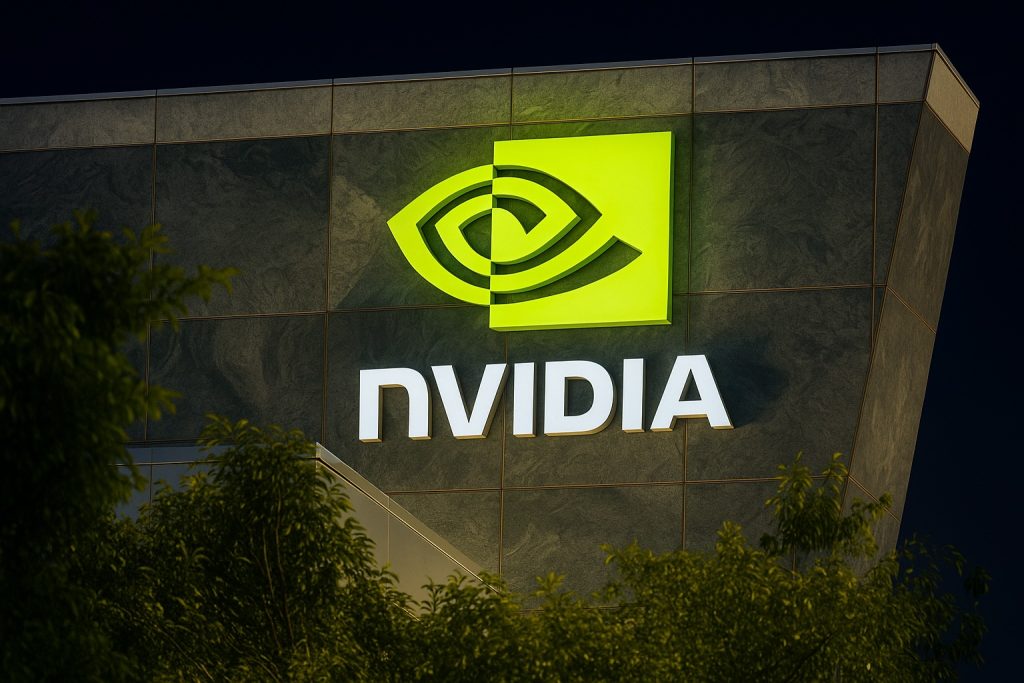- Stock Price: PLUG shares closed around $3.85 on October 15, 2025 [1], having doubled since early September to roughly $4.05 by Oct. 14 [2] [3]. The stock remains volatile – up ~65% year-to-date [4] but pulled back 4.8% on Oct. 15 amid profit-taking [5].
- Recent Surge: In early October, bullish moves drove PLUG sharply higher. On Oct. 3, H.C. Wainwright reiterated a Buy rating and raised its 12‑month target to $7 [6], and Susquehanna lifted its target to $3.50 [7]. These calls, combined with green-hydrogen project news, sent the stock to a mid-October intraday high of about $4.18 (from ~$3.90) [8].
- Q2 2025 Results: In August, Plug reported Q2 revenue of $174 million (up 21% YoY) [9] but a $(0.16) EPS loss (missing estimates by $0.01) [10]. Cost-cutting under “Project Quantum Leap” improved gross margin (–31% vs. –92% a year ago) and reduced cash burn [11].
- Leadership Change: On Oct. 7, Plug announced that Jose Luis Crespo (then CRO) will become President on Oct. 10 and CEO after the 2025 annual report, replacing longtime CEO Andy Marsh (who will become Executive Chair) [12] [13]. Shares fell ~3% in pre-market trading on the news [14].
- Major Hydrogen Deals: On Oct. 1, Plug delivered its first 10 MW GenEco electrolyzer to Galp Energy’s Sines refinery in Portugal – the first module of a 100 MW green-hydrogen project [15]. This project (Europe’s largest PEM electrolyzer installation) is expected to produce ~15,000 tons of renewable hydrogen/year, cutting ~110,000 tons CO₂/year [16]. In July, Plug also extended a hydrogen supply agreement with a major U.S. gas partner through 2030, securing cleaner fuel at lower cost [17].
- Policy Tailwinds: The new U.S. energy bill (“One Big Beautiful Bill Act”) extended key hydrogen credits. CEO Andy Marsh hailed it as “one of the most meaningful policy wins for Plug and really for the entire hydrogen fuel cell sector” [18], noting the bill extends a 30% fuel‑cell tax credit to 2032 and pushes the green-hydrogen production credit out to projects begun before 2028 [19].
- Peer Stock Moves: The Plug rally lifted related hydrogen stocks – Ballard Power (BLDP) jumped ~23% on Oct. 3 alongside PLUG [20]. By contrast, other clean-energy names fell after negative analyst moves (e.g. Bloom Energy and FuelCell Energy) [21], underscoring mixed sentiment in the sector.
Stock Rally and Analyst Buzz
PLUG’s October rally caught Wall Street’s eye. After slipping for much of 2025, the stock surged in early October as analysts turned bullish and hydrogen demand news broke. For example, H.C. Wainwright on Oct. 3 raised PLUG’s price target from $3 to $7 and maintained a Buy rating [22], and HSBC upgraded Plug to a “Strong Buy” on Oct. 9 [23]. These upbeat calls came as the company announced its first big electrolyzer delivery in Europe. The result: Plug’s shares nearly doubled since early September, trading around $4.05 by Oct. 14 [24] – near a 52-week high – before a modest pullback. (On Oct. 15, the stock eased 4.8% to $3.85 [25] as investors locked in gains.)
Despite the recent rally, analysts remain divided on PLUG. Market data show one strategist (HSBC) now calls it a “Strong Buy,” five have Buy ratings and seven are Hold, while six still rate it Sell [26]. Notably, the average 12-month price target is only about $2.47 [27], far below current levels, suggesting many experts see limited upside or even downside risk. As one market commentary noted, the Oct. 15 pullback came after an unsustainable ~150% surge in weeks prior, reflecting “deeper concerns about the company’s financial health” [28].
“Surging electricity costs and new energy policies make green hydrogen more competitive,” H.C. Wainwright explained in its bullish report, arguing Plug’s fundamentals are improving. Indeed, Project Quantum Leap initiatives have cut costs and narrowed losses, something Wall Street acknowledges. But many analysts still warn that Plug is not yet profitable – it has “never turned a profit,” losing about $196 million in Q1 2025 [29] – and that shares might be overbought on hype.
Q2 Earnings and Operational Update
Plug Power’s latest results (Q2 2025, announced Aug. 11) showed steady top-line growth but continued red ink. Revenue was $174 million, up 21% from a year ago [30], driven by demand for its GenDrive fuel cells, GenFuel hydrogen solutions and GenEco electrolyzers. Electrolyzer sales in particular tripled year-over-year (about $45 million in Q2) as more projects moved forward [31]. On the cost side, the company implemented aggressive cuts: as a result, gross margin improved to –31% (vs. –92% in Q2 2024) [32]. Non-cash charges related to Quantum Leap did depress earnings, but the cash burn shrank – unrestricted cash ended Q2 above $140 million, with an undrawn $300M debt facility [33].
Still, Plug reported a $(0.16)$ loss per share for Q2 [34], slightly worse than the (–$0.15) forecast. MarketBeat’s summary noted the company had a negative net margin of –293% in Q2 [35]. Analyst estimates predict Plug will lose more in 2025 and possibly into 2026 before turning profitable. CEO Andy Marsh has highlighted that the cost savings (including workforce cuts, facility consolidations, renegotiated supply contracts, etc.) are beginning to bear fruit. For example, in its earnings release Plug said quantum leap actions “are expected to lower molecule (hydrogen) cost in H2 2025 and onward” [36].
Major Hydrogen Projects and Partnerships
Recent weeks also saw major project milestones and deals that could boost Plug’s long-term outlook. On October 1, the company announced the delivery of its first 10 MW GenEco electrolyzer module to Galp’s Sines refinery in Portugal [37]. This unit is just one of ten to come, ultimately powering a 100 MW green-hydrogen plant – one of Europe’s largest – slated to produce ~15,000 tons of renewable H₂ per year and cut over 100,000 tons of CO₂ emissions [38]. Andy Marsh commented that the project “shows that large-scale hydrogen is ready today” and will serve as a model for refinery decarbonization [39].
Meanwhile, in July Plug inked a new multi-year supply agreement with a major U.S. industrial-gases partner extending through 2030 [40]. This deal locks in reliable liquid hydrogen deliveries at a lower cost, aiding Plug’s GenFuel fueling business and fueling its network growth. Plug’s Q2 highlights explicitly noted a “major hydrogen supply agreement was extended with improved economics,” supporting stronger margins going forward [41]. The company is also pursuing other alliances (for example, it has been working with Allied Green Ammonia on large electrolyzer projects, though details of those deals were announced earlier in the year).
Policy and Regulatory Tailwinds
Government policy is a key factor for Plug’s business. In July 2025, Congress passed the “One Big Beautiful Bill,” a major energy package (H.R.1) that extended critical clean-energy tax incentives. Plug’s management cheered the outcome: CEO Marsh told investors it was “one of the most meaningful policy wins for Plug and really for the entire hydrogen fuel cell sector in the last several years” [42]. Specifically, the act reinstates a 30% investment tax credit for fuel cell systems through 2032, and keeps the clean hydrogen Production Tax Credit alive for any projects begun before 2028 [43]. Marsh said these extensions give Plug “time and flexibility to sequence our hydrogen plant build-out more effectively” without racing for arbitrary deadlines [44].
These subsidies bolster Plug’s core markets. For example, the fuel-cell ITC encourages companies to buy Plug’s GenDrive forklifts (used by Amazon, Walmart, Home Depot, etc.) for warehouse electrification. Similarly, the extended hydrogen PTC makes large electrolyzer projects more economically attractive. Wall Street analysts often cite these “policy tailwinds” as a support pillar for Plug’s business model [45].
Peer Stock Moves and Market Context
The rally in Plug has had a halo effect across the hydrogen sector. Fuel-cell peer Ballard Power Systems (BLDP) jumped roughly 23% on Oct. 3 alongside PLUG [46], as investors cheered bullish analyst notes that applied to the entire industry. On the other hand, some related stocks stumbled on separate news: Bloom Energy (BE) and FuelCell Energy (FCEL) each declined after individual analyst downgrades during the same period [47]. This divergence highlights that while hydrogen demand is expected to grow, investor sentiment is not uniformly positive across all names.
More broadly, PLUG’s movement should be seen in the context of volatile clean-energy markets. The WRAL/StockStory report noted Plug’s prior-month 150% surge followed by a 4.9% pullback on Oct. 15 [48] – a pattern of profit-taking after rapid moves seen in other small-cap energy stocks. Investors are watching whether Plug’s fundamentals (rising sales vs. continuing losses) justify its stretched valuation. As of mid-October, at $3.85 PLUG was very close to its 52-week high of about $4.13 [49].
Analyst Outlook and Forecasts
Looking ahead, analysts remain mixed on Plug Power’s prospects. The Motley Fool recently published a bullish “50% up by 2026” forecast, noting that Plug “could soar 50% by 2026 if [the] trend continues” and pointing out the recent 77% jump on news of the Portuguese electrolyzer deal and analyst upgrades [50]. In contrast, many brokerage reports caution that Plug’s turnaround is still unproven. For example, MarketBeat notes that after the latest price hikes, the consensus 12-month target is just ~$2.47 [51] (a level implying a 30% drop from today’s price), reflecting the viewpoint of more conservative analysts.
In the short term, most experts say the stock will track news flow. Bullish catalysts could include additional project announcements or better-than-expected operating improvements; bearish triggers could be any signs of cash shortfall or disappointing guidance. Several analysts have given 2026 targets ranging from roughly $4 to $7, indicating a wide range of outcomes depending on execution. The extreme volatility makes PLUG a speculative buy; as one market commentary suggested, big price swings in Plug “can present good opportunities” but also signal that investors are cautious [52].
In the long run, Plug’s fate is tied to the hydrogen market’s growth. If global green hydrogen demand really expands as expected (industry forecasts cite annual growth rates of 30–40% over the next decade), Plug’s integrated fuel-cell and electrolyzer platform could capture a significant share. However, that optimistic scenario depends on Plug controlling costs, scaling production, and turning a profit – challenges it has struggled with for years. As CEO Marsh put it, the firm is “in a much better place” now after cost cuts and subsidies [53] [54], but “we’re no longer forced into a race” to meet old deadlines and can build “with market demand” [55].
Investors should weigh these factors carefully. PLUG’s recent stock gains reflect both real progress and pure market enthusiasm. As of October 16, 2025 the shares trade in the mid-$3’s, having come off a brief peak, and the coming weeks will test whether the hydrogen hype has legs. Sources: Company filings and press releases [56] [57] [58]; Reuters and news reports [59] [60]; hydrogen industry news (ts2.tech) [61] [62]; and financial media analysis [63] [64] [65].
References
1. markets.financialcontent.com, 2. ts2.tech, 3. markets.financialcontent.com, 4. markets.financialcontent.com, 5. markets.financialcontent.com, 6. www.marketbeat.com, 7. ts2.tech, 8. ts2.tech, 9. www.ir.plugpower.com, 10. www.marketbeat.com, 11. www.ir.plugpower.com, 12. www.reuters.com, 13. ts2.tech, 14. www.reuters.com, 15. www.ir.plugpower.com, 16. www.ir.plugpower.com, 17. www.ir.plugpower.com, 18. www.timesunion.com, 19. www.timesunion.com, 20. ts2.tech, 21. ts2.tech, 22. www.marketbeat.com, 23. www.marketbeat.com, 24. ts2.tech, 25. markets.financialcontent.com, 26. www.marketbeat.com, 27. www.marketbeat.com, 28. markets.financialcontent.com, 29. www.timesunion.com, 30. www.ir.plugpower.com, 31. www.ir.plugpower.com, 32. www.ir.plugpower.com, 33. www.ir.plugpower.com, 34. www.marketbeat.com, 35. www.marketbeat.com, 36. www.ir.plugpower.com, 37. www.ir.plugpower.com, 38. www.ir.plugpower.com, 39. www.ir.plugpower.com, 40. www.ir.plugpower.com, 41. www.ir.plugpower.com, 42. www.timesunion.com, 43. www.timesunion.com, 44. www.timesunion.com, 45. ts2.tech, 46. ts2.tech, 47. ts2.tech, 48. markets.financialcontent.com, 49. markets.financialcontent.com, 50. www.nasdaq.com, 51. www.marketbeat.com, 52. markets.financialcontent.com, 53. www.timesunion.com, 54. www.timesunion.com, 55. www.timesunion.com, 56. www.ir.plugpower.com, 57. www.ir.plugpower.com, 58. www.ir.plugpower.com, 59. www.reuters.com, 60. www.timesunion.com, 61. ts2.tech, 62. ts2.tech, 63. markets.financialcontent.com, 64. www.marketbeat.com, 65. www.nasdaq.com








